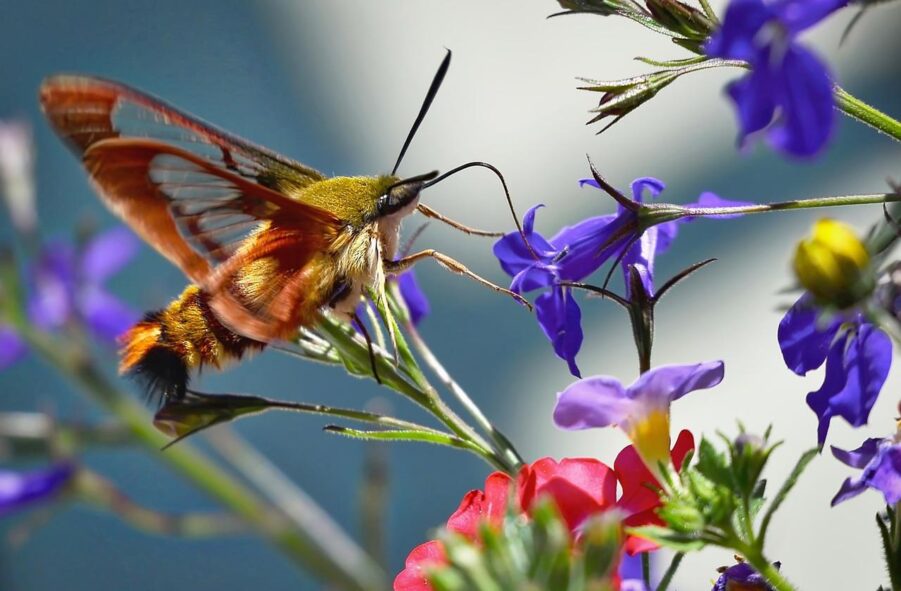Conservation travel and outdoor adventuring are a great way to see wildlife. But no matter where you live, it’s possible to find an array of wildlife right around your home. Your yard or garden can attract a wealth of fascinating critters for you and your family to enjoy. In this Outdoor Tips mini-series on Gardening for Wildlife, we’ll explore steps that you can take to make your outdoor spaces more wildlife friendly. For each tip, I’ll give you my naturalist opinion on how it contributes to a healthy environment, and what wildlife it may attract.
Gardening for wildlife is a great way to benefit the environment while also getting more enjoyment from your yard. Beyond that, it creates opportunities to get up-close and personal with the wonders of nature. By curating your surroundings to harbor natural ecosystems, you can bring nature right to your doorstep. In fact, this can happen with even a few small changes. However, if you’re feeling ambitious and want your own homegrown national park, these posts will help you do that, too.
1. Minimize lawn
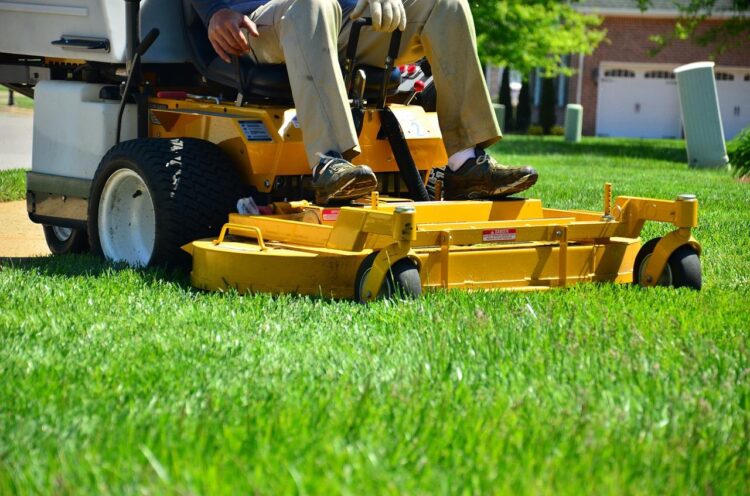
A well-groomed, lush green lawn is certainly attractive and often the sweetheart of many home-owner’s associations. But how much lawn do you really need? When it comes to lawn space, most people find that they can get along just fine with less. As you may know, taking care of a lawn is a lot of work. But beyond that, it’s also not particularly good for wildlife or the environment. Having less lawn is an easy way to invite nature to your garden by actually doing less work.
Lawns = Chemicals
Lawn maintenance typically involves the application of herbicides to discourage weeds, and insecticides to combat lawn-munching bugs. Unfortunately, none of these common chemicals are particularly specific. That is, they kill all sorts of herbaceous plants and native insects, not just the ones that they target. Ultimately, this means that native plant and animal species will have a hard time getting started in your garden. Furthermore, lawns guzzle water, increasing their environmental impact.
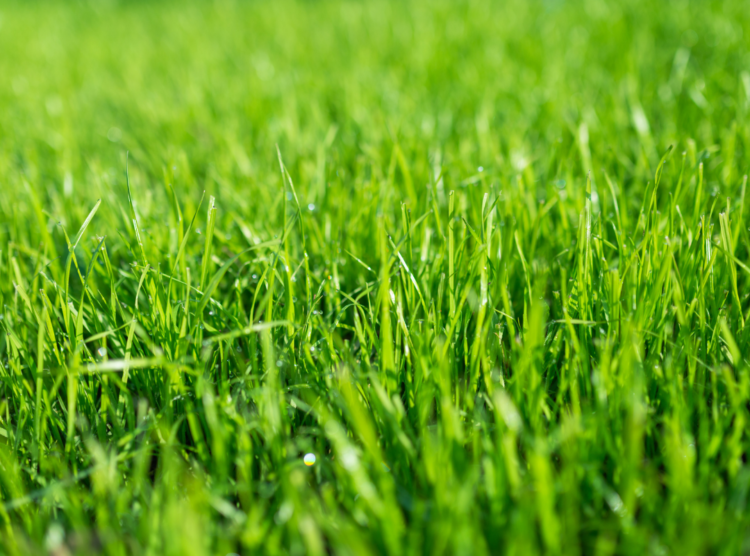
Manicured lawns consist of only a single species of plant, the grass itself. This low plant diversity is what scientists call a monoculture, and it leads to two problematic situations. First, pest organisms like grubs that feed on the one plant in a monoculture tend to show up in huge numbers. Second, the habitat itself is not hospitable to interesting native species. Making your garden more wildlife friendly can reduce pest numbers and bring neat native insects to your yard.
Try choosing a couple of sections of your lawn and replacing them with some form of garden. Pollinator-friendly flowers or xeriscape gardens that require less water are a great option. Otherwise, why not grow some healthy veggies?
2. Leave (or plant!) some trees
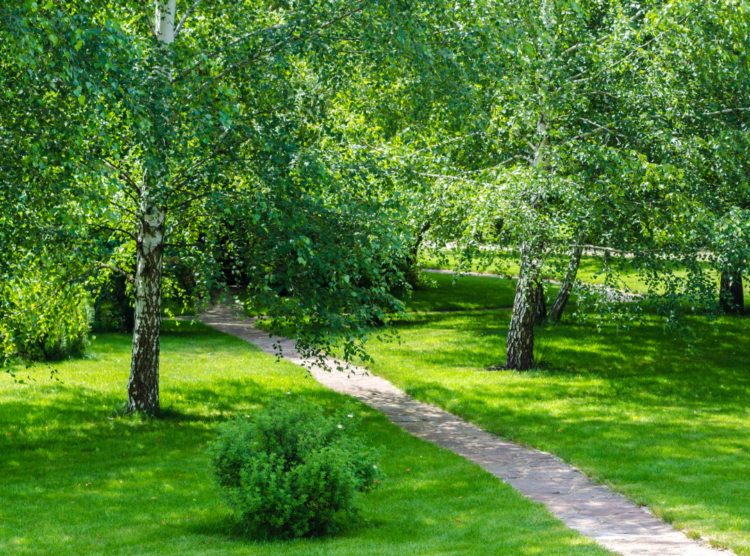
Trees are a major resource for a variety of wildlife. Unless it’s an exotic or invasive species that may be environmentally harmful, it’s almost always better to leave trees standing. Given the chance, it’s more sustainable to keep old trees than to cut them down and plant new ones. Larger, older trees also tend to be more valuable to wildlife than smaller, younger ones.
However, planting new trees is a great option if you don’t currently have any on your property. As a rule of thumb, native trees that are well adapted for the soil and sunlight in your garden are the best way to go. And unless a particular tree species is invasive or could potentially damage your home, its always better to leave existing trees standing than to cut them down and start over again.
All kinds of trees can help your wildlife garden
Trees make shade during summer months, providing a safe haven for plants that can’t tolerate full sun. They are also safe nesting spots for a variety of native birds, and good places to hang bird feeders. Older, larger trees can provide more of this type of habitat. They are also more likely to have thick and wrinkled bark, which is another form of habitat for small invertebrates.
Woodpeckers, creepers, and other tree-foraging birds tend to gravitate toward older trees. Even dead trees can be extremely useful for wildlife. Woodpeckers may make nest cavities in snags (the nature nerd word for dead trees). After they move out, a diversity of wildlife species will seek out this prime real estate. A variety of songbirds, owls, ducks, flying squirrels, and other mammals will nest in old woodpecker holes.
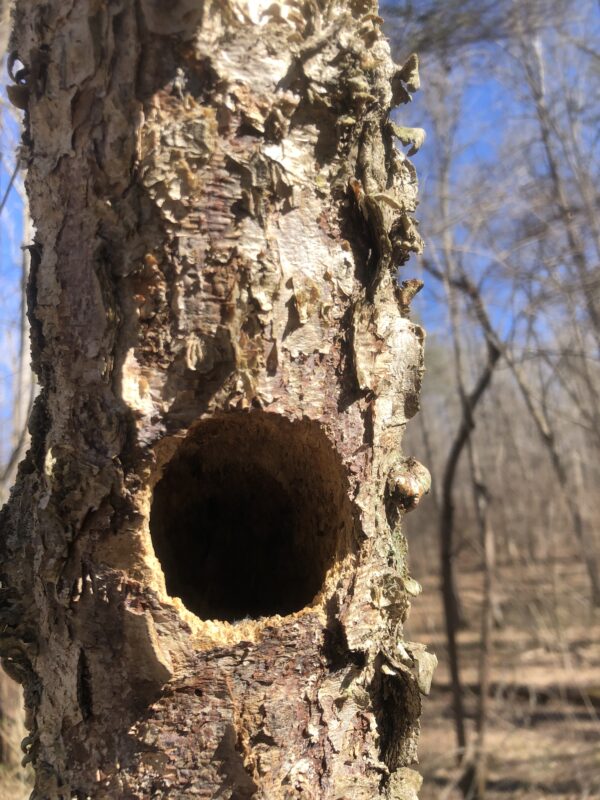
Finally, trees add leaflitter to your garden ecosystem. Although this might not sound like an advantage, there are plenty of reasons why it’s a good thing. Pine trees like the Eastern white pine (Pinus strobus) in North America also drop needles year-round. These needles eventually collect into a duff layer which can alter the soil chemistry below the tree. As it thickens, this duff layer creates a unique habitat used by local plant and insect species. Check out the next section for more!
3. Leave the leaves
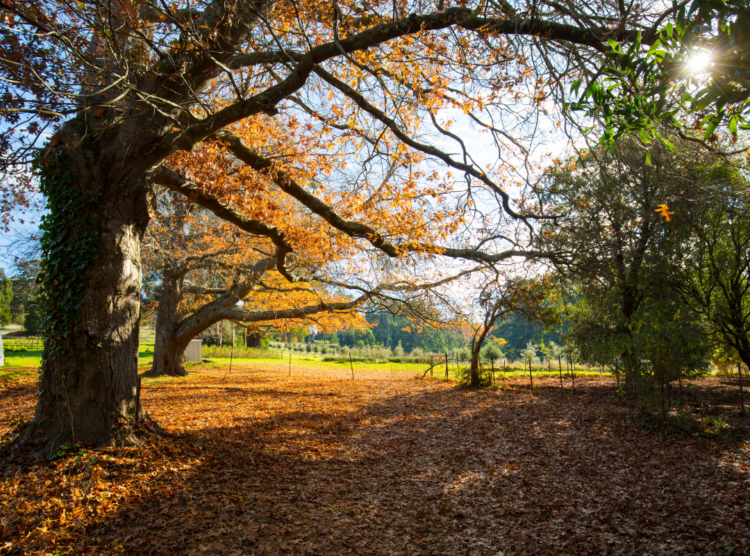
Leaves perform a multitude of valuable functions in a wildlife garden. First, they protect plant roots, sprouts, and seedlings from temperature extremes. You can think of the leaf litter as a blanket that insulates the sensitive underground parts of plants. This can greatly increase their winter survival and their growth and liveliness come spring.
Secondly, leaves provide both food and habitat for a huge array of micro-organisms. Even if you don’t love all the neat bugs that spend the winter in your leaf litter, there is reason to appreciate it. Many of those insects are “natural enemies” of common garden pests, and will pay dividends by eliminating them. Those that aren’t will be food for birds and other animals, and will help attract other wildlife.
A community of garden-helpers
As the community of invertebrates in the leaf litter grows over time, it will begin to make new soil. A micro-ecosystem of fungi, bacteria, and dozens of species of bugs will process your leaves into perfect mulch. This holds in moisture so your garden loses less water.
Additionally, it lets natural fertilizer seep down into the soil when it rains. Instead of raking all of the leaves out of your flowerbeds, try leaving it over winter. Then, when you need to plant something new, rake it aside. Once you have made your new plantings, spread a light layer of leaf litter around the plantings. This will provide them with insulation benefits without preventing them from getting light.
4. Plant native wildflowers & pollinator-friendly plants
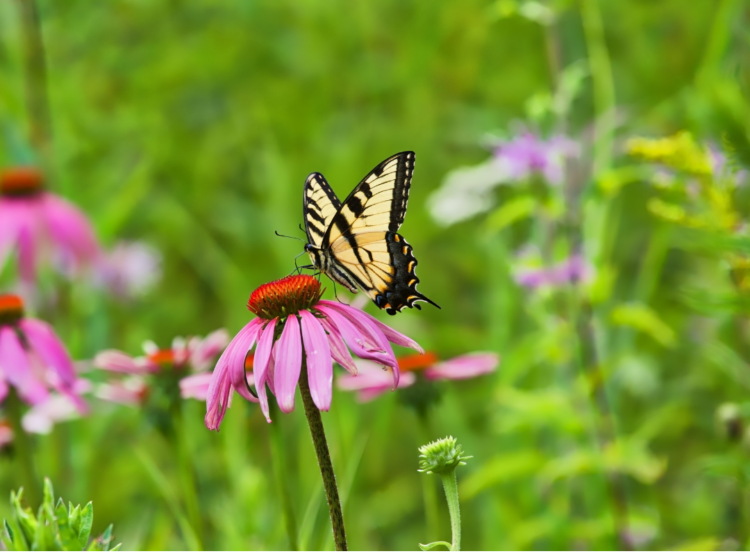
Another big rule in gardening for wildlife is planting native species. Whether they are trees, grasses, shrubs, or flowers, native plants are crucial. Essentially, native plants are compatible with local communities of bugs, mammals, birds, fungi, and other wildlife. This compatibility makes them part of the local ecosystem. Although you might think this leads to more pests, much of the time it has the opposite effect. Native plants will also attract the predators of their pests, which will keep numbers low.
Native plants provide food and shelter for local wildlife species. If you’re interested in attracting them, planting native species is the way to do it. This approach can bring in everything from butterflies looking for nectar sources, to beautiful beetles looking to snack on aphids.
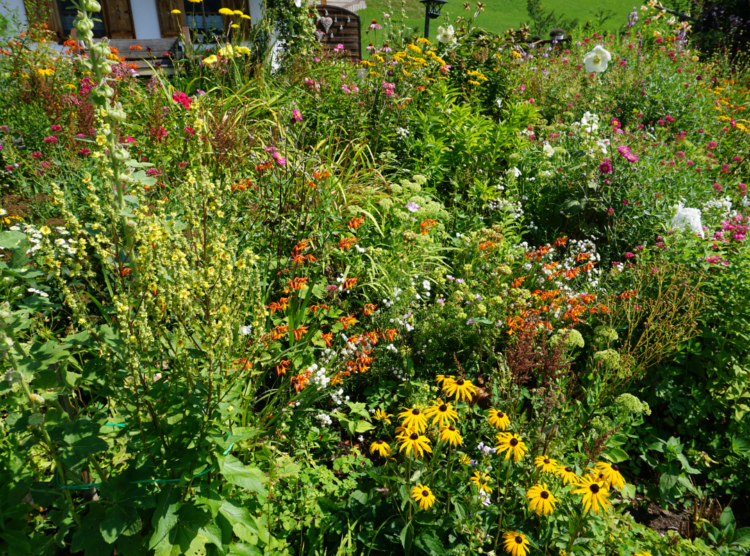
Make a difference for pollinators!
Butterflies, native bees, and other valuable pollinators are in global decline. Without their pollination services, many important agricultural crops will fail. If you have a yard or garden, you can do your part to support pollinator populations by planting native species. Seed vendors like Botanical Interests are a great place to find native options for your garden.
They offer options like butterfly-friendly seed packs that importantly support both adult and larval butterflies (that is, caterpillars). If you’re looking to help a friend enrich their wildflower garden, they even have a pollinator gift set.

Fantastic new efforts like the Tufts Pollinator Initiative provide great advice and knowledge supporting wild pollinators. If you’re in the U.K., the Wildlife Trusts’ Wild Bee Action Pack gives excellent guidance.
5. Have a woodpile or brushpile

People consider often woody debris unsightly in back yards and gardens. Certainly, sticks and branches aren’t particularly attractive if they’re lying around haphazardly. Rather than sending all of your extra sticks away with your yard waste, consider finding a spot for a brushpile. This can be in a less-visible part of your garden in case people don’t find it attractive. In terms of gardening for wildlife, extra woody debris provide both food and shelter for all kinds of wildlife.
If you have a fire pit, wood stove, or brick oven (I’m jealous already), consider storing discarded fuelwood outside. Old woodpiles provide great habitat for loads of useful bugs that hunt pests, and native bees that are spectacular pollinators. Snakes, salamanders, frogs, and native mammals like chipmunks or dormice also find shelter in woodpiles. A couple of years ago, I found one of the most beneficial household insects, a pseudoscorpion, in my woodpile in Montana.
Depending on where you live, though, you should keep an eye on woodpiles to make sure that rats don’t move in. This can be a problem in urban areas, where predators like snakes won’t be around to keep them under control. Occasionally moving or rearranging woodpiles can keep rats from nesting, however.
Want to learn more about gardening for wildlife?
Are you feeling inspired by this post series? You can dig deeper into gardening for wildlife and how it contributes to conservation with the reading list below. We recently interviewed Doug Tallamy, the author of several great books on this topic, on the Nature Guys podcast. Here are some great books on backyard wildlife and sustainable gardening:
Gardening for wildlife
- Rambunctious Garden: Saving Nature in a Post-Wild World, by Emma Marris
- Natural Gardening for Birds: Create a Bird-Friendly Habitat in Your Backyard, by Julie Zickefoose
- Bringing Nature Home: How You Can Sustain Wildlife with Native Plants, by Doug Tallamy
- Native Plant Gardening for Birds, Bees & Butterflies, by Jaret C. Daniels. This is a four-part series of regional guides to gardening for wild insects in North America.
- The Naturescaping Workbook: A Step-by-Step Guide for Bringing Nature to Your Backyard, by Beth O’Donnell Young. A great practical guide to plan your nature garden.
Backyard nature
- Nature’s Best Hope: A New Approach to Conservation That Starts in Your Yard, by Doug Tallamy
- Wonderful Weeds and Various Varmints: The Natural World in Our Backyards and Beyond, by Bob Collier
- Inviting Nature to Dinner: The benefits of bringing biodiversity to our backyards, by Helen Schwencke and Dick Copeman. This book focuses on Australia, but the conservation and natural history topics it discusses are relevant to the rest of the globe.
- Fylling’s Illustrated Guide to Nature in Your Neighborhood, by Marni Fylling
Thanks for reading how to garden for wildlife!
Do you have tips for environmentally friendly gardening that you’d like to share? How do you bring wildlife to your garden? What’s the coolest plant or animal you’ve found in your back yard? Leave a comment below, or get in touch using the contact page!

